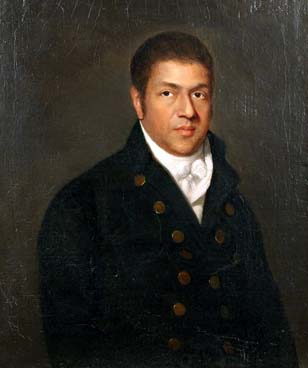Facts about Paul Cuffe
Paul Cuffe Biography
Paul Cuffe was a Massachusetts shipping magnate of the early 19th century, and probably the wealthiest Black American of his era.
Paul Cuffe was the youngest of the ten children of an emancipated African, Kofi Slocum, and Wampanoag tribe member Ruth Moses. Paul was raised in Westport and educated by abolitionist Quakers, and at the age of 14 began the life of a sailor.
Three years later, he was jailed for three months by the British during the American Revolution, and three years after that he began his own shipping business, carrying freight between Westport and Nantucket (1779). The next year he was briefly jailed again, this time for civil disobedience: Cuffe argued that he shouldn’t be taxed, as he was not allowed to vote. Although he lost his case, his action led to a change in the law by 1783.
In the last two decades of the 18th century, Paul Cuffe became a wealthy and respectable Atlantic merchant, trading in the Caribbean, Europe and Russia. All this was at a time when the trade in African slaves was still booming; Cuffe and his all-Black crew risked kidnapping and captivity as they sailed the hemisphere.
Much of Cuffe’s success came from his associations with Quakers, from whom he learned of abolitionism and the efforts to re-settle emancipated slaves in Africa. Cuffe voyaged to Sierra Leone to investigate the possibilities of emigration in 1810, and again in 1815, when he paid passage for 18 adults and 20 children. His early back-to-Africa venture failed and he died two years later, but he left behind a substantial estate and a reputation for generous philanthropy as well as business acumen.
Extra credit
As a young man, Paul Cuffe changed his surname from Slocum — the name of his father’s one-time master — to Cuffe (sometimes spelled as Cuffee). This was presumably a variation on his father’s first name of Kofi… No known portrait of Paul Cuffe was done during his lifetime; as with other Quakers of the era, he felt portraiture was inappropriately proud or showy.

